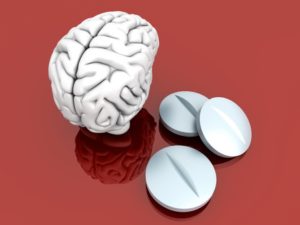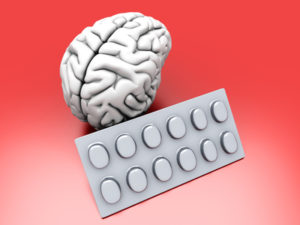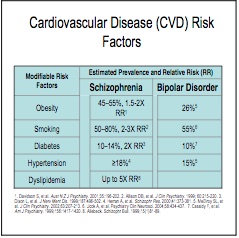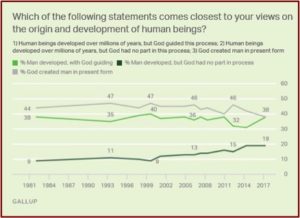The Open Secret of K2 in Prisons
Early Wednesday morning on April 19, 2017, Aaron Hernandez was found dead in his prison cell. He hung himself by wrapping a bed sheet around his neck and tying it to a bar on the window of his cell. The former tight end for the New England Patriots was found guilty of first-degree murder in 2015 and was sentenced to serve life in prison without the possibility of parole. Investigators suggested Hernandez killed Odin Lloyd because he didn’t want information about his bisexuality to become public knowledge. He had slicked the floor of his cell with liquid soap, probably in case he lost his nerve in the midst of his suicide attempt.
While the eternal spiritual state of his soul can’t be known with any certainty, what is known for sure is there was K2, a form of synthetic marijuana, in him when he died. Writing for Newsweek, Michelle McPhee reported Hernandez had a Bible open to John 3:16 in his cell and had scrawled the verse in red ink on his forehead. He also made red ink marks on his hands and feet, mimicking the stigmata of the crucifixion of Christ. He wrote three notes—one to his fiancée, the mother of his daughter, one to his daughter and one to a man identified as his prison boyfriend.
In a second article, McPhee said verifying the presence of K2 in Hernandez’s system led to a State Police raid at the Souza Baronwski Correctional Center (SBCC), the prison facility where Hernandez died. Department of Correction sources confirmed a wide-scale investigation was underway at the prison, as well as a warehouse used to store dry goods before they went into the prison. But this is not just freak occurrence within a single Massachusetts state prison. Aaron Hernandez’s tragic death spotlighted a serious problem with synthetic marijuana in prisons.
Writing for The Fix on April 19th, Seth Ferranti described how the U.S. Bureau of Prisons (BOP) has a synthetic marijuana problem. The problem is twofold. First, the BOP doesn’t regularly test for synthetic marijuana. Prisoners are tested for illicit drugs such as heroin and marijuana, but the standard urines tests don’t screen for the metabolites from synthetic marijuana. However, there is technology available to test for synthetic marijuana. Google “synthetic marijuana urine tests.” You can even order the kits through Amazon.
Second, if an inmate is caught with synthetic marijuana, it is a relatively minor offense—a 300 series incident report—equivalent to illicit tobacco possession. Possession of illicit drugs like heroin or marijuana or a positive urine test for those substances is a series 100 offense, the most serious incident report. A series 100 offense could result in 60 days in Disciplinary Segregation (the hole), or the loss of good time, commissary, or visiting and phone privileges for up to one year. The punishment for synthetic marijuana is essentially a slap on the wrist. “By switching their illicit smuggling ventures to K2 or Spice they’re lessening the consequences that they’ll face when caught.”
The Federal Correction Institution (FCI) in Forrest City Arkansas was given as an example. A prisoner said after the 9:30 pm count, the bathrooms and shower stalls fill up with prisoners smoking some version of K2 or Spice. It can be hard to find an open shower stall to take a shower. On the recreation yard at dusk, clouds of smoke appear over the bleachers from all the people smoking K2. “With endless amounts of time and little fear of consequences, inmates are smoking nonstop.”
The effects of synthetic marijuana on an individual can vary widely. One man began to dance around like a ballerina. As guards tried to subdue him, he resisted yelling that it was their fault. “You let it in, you bring it in. It’s all a conspiracy to get everyone to tell on each other.” Another person started hugging his bunk, while “screaming like a banshee.” When other prisoners tried to quiet him, it only became worse.
I talked to one dude and he said he hit it and he started rapping. He told me he never rapped in his life, but that was all he could do to not lose his mind. Then another dude smoked some and crawled under the bunk. When we got locked down this guy went totally … crazy. He kicked a C/O and went absolutely insane, screaming and running, all kinds of crazy shit. Another guy thought he was God and that the end of the world was coming, slobbering and acting like a five year old. It’s all bad man.
Smuggling K2 into prisons is done by a variety of methods, but visitation is the primary method. Guards will smuggle K2 in, seeing it as a lesser evil and as a way to make some easy money. The main way it came into Forrest City was over the fences, which are low. “Campers or free world people throw packages over the recreation yard fence.” At FCI Beckley in West Virginia the regular smuggling gauntlet is through the mailroom. K2 begins as a liquid that can be sprayed on any kind of paper product, like letters. Inmates then smoke or ingest pieces of the soaked paper, or sell it to other inmates. Chris said: “It’s becoming an issue at every institution. It’s crazy here.”
While U.S. media coverage of this problem was scarce before Hernandez’s death, it has been regularly noted as a concern in U.K. prisons for several years. In October of 2015, BBC News reported how investigators concluded the use of Spice in an Oxfordshire prison contributed to an increase in violence. A November 2016 article in The Daily Mail described a documentary, the “Secret Life of Prisons,” that said drugs (particularly Spice) are widely available. The drugs are smuggled in with drones, hidden in trainers, and even on children’s drawings.
A Vice article on January 29, 2016, reported how prison officers said they are getting involuntary hallucinations after entering cells where inmates had recently smoked Spice (it’s odorless). Another BBC News article reported officers at HMP Holme House complained of feeling dizzy after entering cells where inmates had smoked Spice. One officer they believe was exposed had a fierce burning sensation in his head, “which felt like his head was covered with nits, and [he] spent the night tearing at the top of his head.” One former inmate said he’s seen men go berserk, turning on their best friends. “I’ve also seen it where lads have dropped down dead, had heart attacks, gone into comas, gone loopy and ended up being sectioned because of it.”
An April 19, 2017 article on Devon Live described the problem with synthetic marijuana at another British prison, HMP Dartmoor. Here, like the U.S. prison in Forest City Arkansas, the drugs mostly come into the prison is as “throwovers” tossed over the prison wall. An ex-offenders’ organization called User Voice surveyed nine jails on their use of Spice. One third reported using Spice in the previous month. User Voice said the use and popularity of Spice contributed to an increase of violence, bullying, mental and physical ill health concerns, and even death within British prisons.
Writing for the Pittsburgh Post-Gazette, Rich Lord described the K2 problem at the Pennsylvania State Correctional Institution – Huntingdon. Inmates have written to the Post-Gazette, saying they don’t like seeing their neighbor passed out from the drugs they buy in the prison yard. A member of the security team at the prison said these guys who use K2 are often zombie-like: “They’re just groaning, moaning and not able to understand anything that’s being said to them.” SCI Huntingdon first noticed K2 about eighteen months ago.
When an inmate’s belongings test positive for K2, he typically gets 90 days in restricted housing, meaning he spends 23 hours a day locked in a Spartan cell. The restricted housing unit at Huntingdon is largely filled with prisoners whose belongings tested positive for K2. Some inmates claim they were wrongly identified as having K2. One prisoner wrote how he received a misconduct report accusing him of having K2 in a bottle he said held only shampoo. The misconduct could stymie his bid for boot camp and early parole. He said: “I’ve made mistakes, but I don’t deserve this.”
There is regular reporting on the growing presence of K2, Spice and other new psychoactive substances in the U.S. So the apparent silence on the extensive the use of synthetic marijuana use in U.S. prisons is curious to me. It was encouraging to see the coverage given to it by the Pittsburgh Post-Gazette. But it seems the methods used to uncover K2 use need to be more accurate, as the negative consequences to inmates for false positives are so serious. The ready availability of these substances in prisons seems to be an open secret—we know they are in there, but just don’t want to think about it.
See other articles on new psychoactive substances (NPS) on this website such as: “Not Meant for Human Consumption.”










